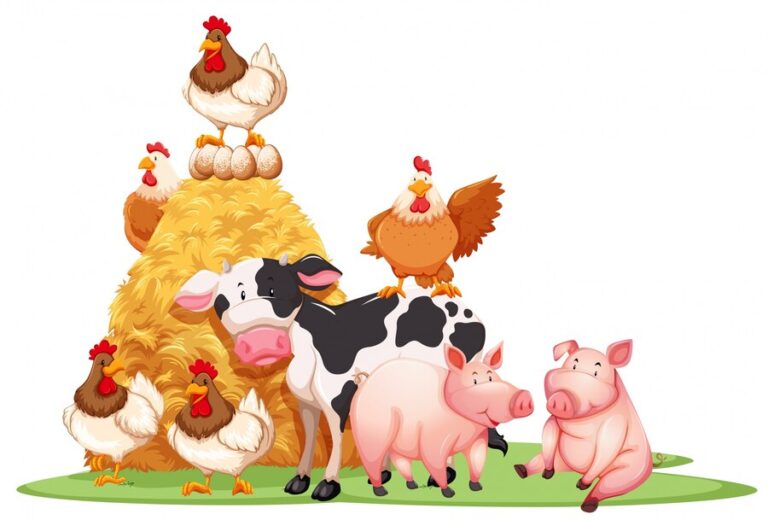Riddles have long sparked curiosity and fueled critical thinking. One such puzzle that’s made its rounds and left many scratching their heads is this peculiar query:
“30 cows 28 chickens, how many didn’t?“
At first glance, it seems straightforward—perhaps a simple math problem? But there’s an underlying twist that challenges logic and interpretation, making it so much more than just numbers. Throughout this post, we’ll uncover the meaning, explore the solution, and show how riddles like this foster critical thinking and problem-solving skills, not just for math enthusiasts, but even for farmers and everyday problem-solvers.
Unpacking the Riddle
If you’re looking for a tricky, brain-teasing exercise, this riddle delivers. Let’s first break it down for clarity.
“30 cows 28 chickens, how many didn’t?”
When first heard, many take it literally, assuming the numbers represent mathematical quantities. However, there’s more here than meets the eye. This is not a straightforward arithmetic problem but rather a clever play on words. The key? How it’s spoken.
When said aloud, the phrase “28 (twenty ate)” reveals its true meaning. Instead of saying “28” as a number, it’s actually describing an action—“20 ate chickens.” With this realization, the sentence transforms into a story:
“30 cows (out of which 20 ate chickens). How many didn’t eat chickens?”
This is where critical thinking comes into play. Recognizing that the riddle relies on auditory interpretation sharpens listening and comprehension skills—valuable tools in both education and day-to-day problem-solving.
Solving the Riddle Step-by-Step
Now that we’ve clarified the riddle, it’s time to solve it.
- Understand the Scenario
- There are 30 cows in total.
- Of those 30 cows, 20 consumed chickens.
- The Objective
- Determine how many cows did not eat chickens.
- The Solution
- Total cows = 30.
- Cows that ate chickens = 20.
- Cows that didn’t eat chickens = Total cows – Cows that ate chickens.
- 30 – 20 = 10 cows.
Answer: 10 cows didn’t eat chickens.
Bonus Approach for Logical Thinkers
Even if the play on words stumps you, using basic arithmetic principles or visualizing the scenario can lead you to the correct answer. Whether you consider it mathematically or contextually, the answer remains 10 cows.
The Origins and History of the Riddle
Riddles like “30 cows 28 chickens, how many didn’t?” often arise from oral traditions, where speaking and listening are just as important as problem-solving. This particular riddle has variations depending on the storyteller but is commonly used to gauge analytical listening and creative thinking.
Historically, riddles have been an integral part of education and social interaction. Ancient cultures used puzzles to teach logic and ethics, while modern classrooms use them to encourage active engagement. They’re versatile tools for blending learning with entertainment, transcending generations and geographical locations.
The appeal of this specific riddle lies in its simplicity and the surprise twist that challenges assumptions. It’s a great conversation starter, a way to test wit, and a delightful reminder of the importance of carefully interpreting what we hear or read.
The Riddle in Everyday Life
While riddles like these are undeniably fun, they also serve a greater purpose. Solving them requires a mix of skills that can be applied in real-world contexts, such as farming, business, and education.
Practical Applications of Critical Thinking
- Observation and Attention to Detail
- This riddle demonstrates the importance of paying close attention, not just to numbers but also context and language. Farmers, for example, use similar levels of observation when assessing crop health or livestock behavior.
- Improved Problem-Solving Skills
- The riddle teaches you to think beyond the obvious, a key skill in unexpected situations. Whether managing resource allocation or troubleshooting equipment, using logic creatively can save time and money.
- Effective Communication
- Misunderstandings often arise when words are interpreted differently. Just as this puzzle hinges on a spoken twist, clear and precise communication is integral in both personal and professional life.
- Analytical Thinking for Math Enthusiasts
- Math riddles like this cultivate a love for numbers and problem-solving by combining logical reasoning with playful elements.
Examples in Practice
For instance, consider a farmer tallying livestock but noticing discrepancies between available feedstock and consumption patterns. Skills honed through such riddles—spotting inconsistencies, re-evaluating assumptions, and thinking logically—become the problem-solving weapons you don’t realize you’re sharpening.
Think Riddles Are Just Fun? Think Again
Riddles serve as gateways to education, building sharper minds and fostering collaboration in friendly problem-solving environments. Beyond their entertainment value, they instill lasting skills such as logical reasoning, critical thinking, and creativity. These attributes apply to every individual, from students solving an algebraic equation to farmers juggling resources on the field.
Riddles also connect communities, creating shared experiences and cultivating a love for exploration and pondering. Just like the “30 cows 28 chickens” brain teaser, they prove learning can be as fun as it is beneficial.
What’s Your Favorite Puzzle?
The delightful intrigue behind riddles like these reminds us of the joy in solving little mysteries. Whether you’re a math enthusiast seeking your next challenge, an educator incorporating them into lessons, or a farmer sharpening problem-solving skills with clever puzzles, riddles bring value.
Have a favorite riddle that left you scratching your head or an educational puzzle that’s worth sharing? Comment below or share it with us! Know someone who’d enjoy decoding this riddle? Share this post!
We’re here to celebrate curiosity and critical thinking—and we encourage you to keep feeding those skills with puzzles, riddles, and challenges.
